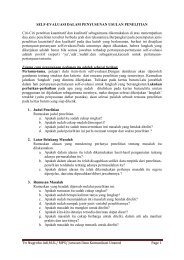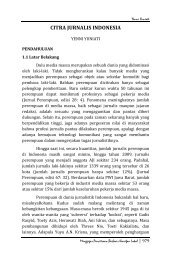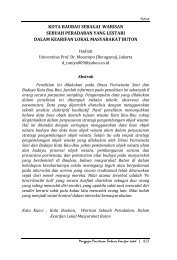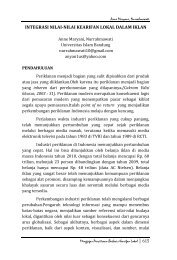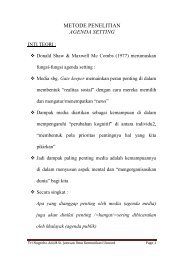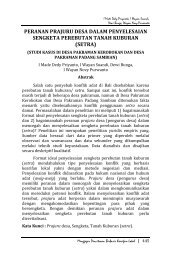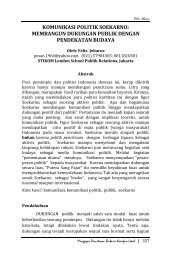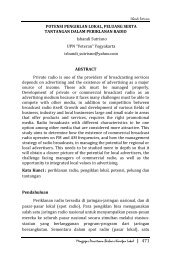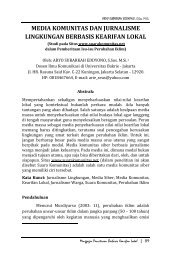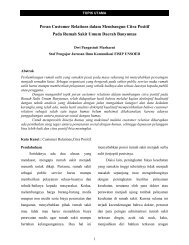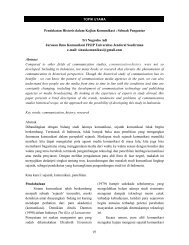New Vocabularies in Film Semiotics
New Vocabularies in Film Semiotics
New Vocabularies in Film Semiotics
Create successful ePaper yourself
Turn your PDF publications into a flip-book with our unique Google optimized e-Paper software.
FORMALIST APPROACHES 113<br />
The detective, Paolo, and Guido [<strong>in</strong> Cronaca] need someth<strong>in</strong>g extra<br />
to ratify what they have been observ<strong>in</strong>g. They need a sanction…a<br />
sort of control coupon as a seal of guarantee; it would legitimize the<br />
presence and performance of the characters…But like the mandate,<br />
the sanction too cannot reach the <strong>in</strong>terested parties unless someone<br />
weighs their actions from the outside…besides a receiver who is<br />
evaluated, a subject who evaluates…<br />
(Casetti 1986: 76)<br />
Casetti’s argument concern<strong>in</strong>g Stage Fright details the process whereby<br />
predication authority is withheld from Jonathon as a character-narrator,<br />
lead<strong>in</strong>g to the disauthentication of his version of events—rendered <strong>in</strong> the<br />
famous “ly<strong>in</strong>g flashback” near the beg<strong>in</strong>n<strong>in</strong>g of the film. Although the<br />
“ly<strong>in</strong>g flashback” appears to be an authentic report of the facts, the<br />
character-narrator or <strong>in</strong>vok<strong>in</strong>g narrator does not possess the authentication<br />
authority that the extradiegetic narrator commands as a matter of course.<br />
In order for Jonathon’s discourse to be taken as true, the enunciator must<br />
confirm the character-narration <strong>in</strong> some fashion. In Casetti’s model, the<br />
extradiegetic narrator may delegate to a character-narrator certa<strong>in</strong> of the<br />
four narratorial functions, such as performance and competence, and may<br />
allow the mandate to be supplied by another character, such as Eve, who<br />
overtly requests the report from Jonathon, but the crucial ability to be able<br />
to sanction the report of the character-narrator can only reside with an<br />
extradiegetic narrator who alone controls the authentication function.<br />
While everyth<strong>in</strong>g the extradiegetic narrator fashions yields a fact for the<br />
fictional world, the character-narrator, by contrast, has to “earn his<br />
authentication authority” (Dolezel 1980:18).<br />
A comprehensive and synthetic view of filmic narration is offered by<br />
Tom Gunn<strong>in</strong>g <strong>in</strong> D.W.Griffith and the Orig<strong>in</strong>s of the American Narrative<br />
<strong>Film</strong> (1991). Gunn<strong>in</strong>g beg<strong>in</strong>s by discuss<strong>in</strong>g the apparent difficulty of<br />
perceiv<strong>in</strong>g film as a narrative form, given its overtly mimetic character.<br />
How can film be understood to “tell” a story, when it primarily “shows” a<br />
fictional world, <strong>in</strong> a seem<strong>in</strong>gly neutral way, without narratorial <strong>in</strong>flection<br />
or com– mentary? His solution is to argue that it is precisely the channel<strong>in</strong>g<br />
and organiz<strong>in</strong>g of the mimetic dimension of the film-text that def<strong>in</strong>es the<br />
role of c<strong>in</strong>ematic narration.<br />
The primary task of the filmic narrator must be to overcome the<br />
<strong>in</strong>itial resistance of the photographic material to tell<strong>in</strong>g by creat<strong>in</strong>g a<br />
hierarchy of narratively important elements with<strong>in</strong> a mass of<br />
cont<strong>in</strong>gent details. Through filmic discourse, these images of the<br />
world become addressed to the spectator, mov<strong>in</strong>g from natural<br />
phenomena to human products, mean<strong>in</strong>gs arranged for a spectator. It



